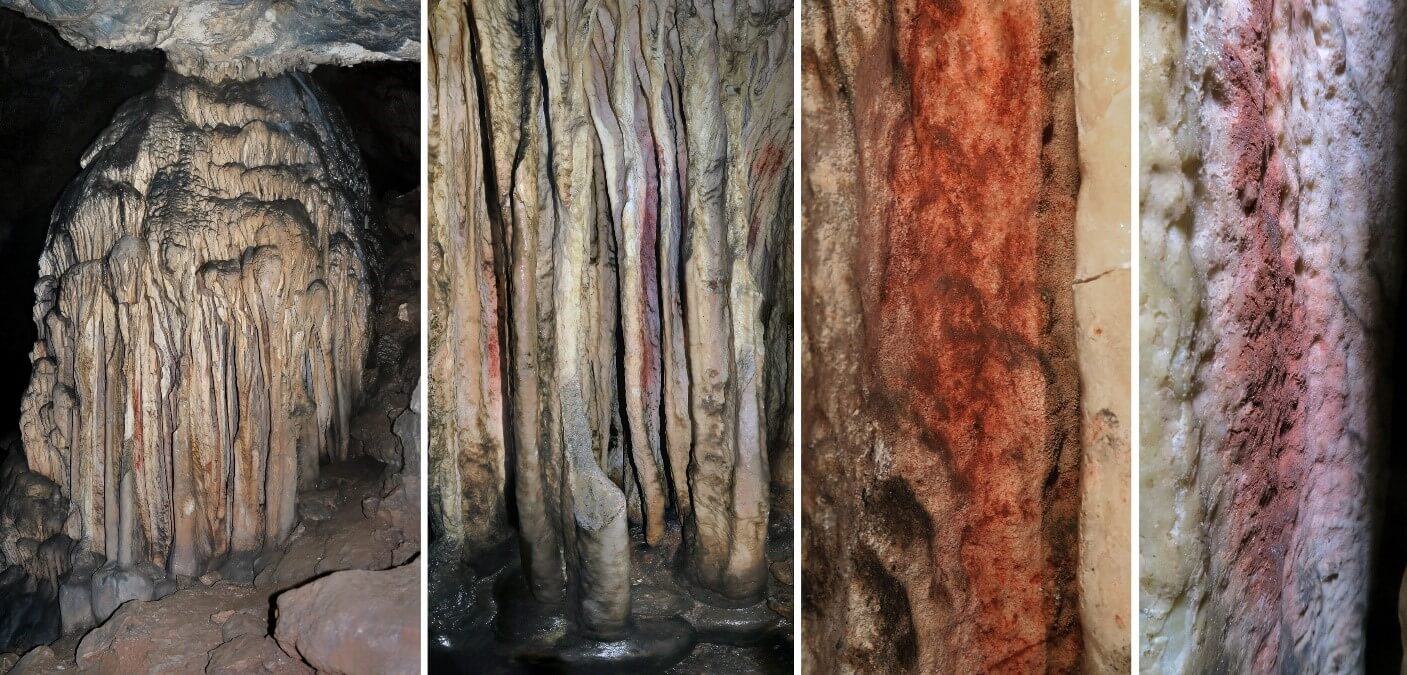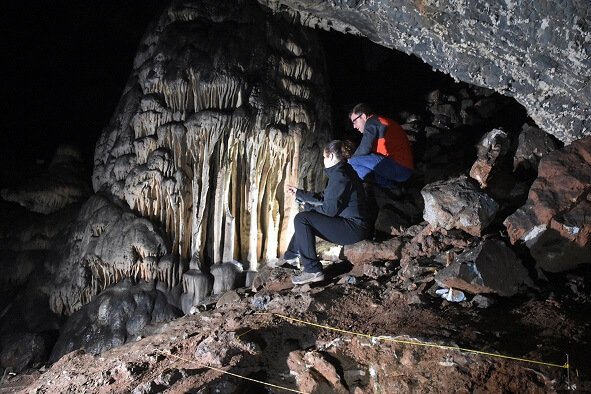Anthropology
Related: About this forumNeanderthals painted stalagmites red
3 August 2021
/Deborah Devis
Ochre pigments reveal 65,000-year-old Spanish cave paintings.

Flowstone formation in the Sala de las Estrellas at Cueva de Ardales (Malaga, Andalusia), with the traces of red pigment analysed and discussed in the article. Credit: João Zilhão, ICREA
Deep in Cueva de Ardales (Cave of Ardales) in Spain, stalagmites have been painted red by artistic Neanderthals, according to a study published in PNAS.
Stalagmites, or flowstones, are long, hanging spikes made from calcite and other carbonate materials that form where water flows down cave walls and floors. The stalagmites in Cueva de Ardales, near Málaga on Spain’s south coast, are stained red in places, but it had previously been unclear whether the colouring was natural or painted.
Now, an international team of researchers, led by Africa Pitarch Martí from the University of Barcelona, Spain, has used different forms of microscopy and spectroscopy – studying how light is absorbed – to determine that the red pigment is made of ochre and not the iron-oxide-rich deposits of the cave.
This means they couldn’t have been stained naturally as the stalagmites formed, and so must have been painted.
. . .

Researchers looking toward the massive speleothem of Cueva Ardales, with archaeological
trench in the foreground. Credit: Pedro Cantalejo-Duarte.
More:
https://cosmosmagazine.com/history/archaeology/neanderthals-painted-stalagmites-with-ochre/
marble falls
(62,051 posts)... either that or OSHA enforced its rules on marking hazards with safety red even back then.
Judi Lynn
(162,377 posts)AFP 3 AUGUST 2021
Neanderthals, long perceived to have been unsophisticated and brutish, really did paint stalagmites in a Spanish cave more than 60,000 years ago, according to a study published on Monday.
The issue had roiled the paleoarchaeology community ever since the publication of a 2018 paper attributing red ocher pigment found on the stalagmitic dome of Cueva de Ardales to our extinct "cousin" species.
The dating suggested the art was at least 64,800 years old, made at a time when modern humans did not inhabit the continent.
But the finding was contentious, and "a scientific article said that perhaps these pigments were a natural thing," a result of iron oxide flow, Francesco d'Errico, co-author of a new paper in the journal PNAS told AFP.
More:
https://www.sciencealert.com/new-study-confirms-neanderthals-created-ancient-spanish-cave-art-60-000-years-ago